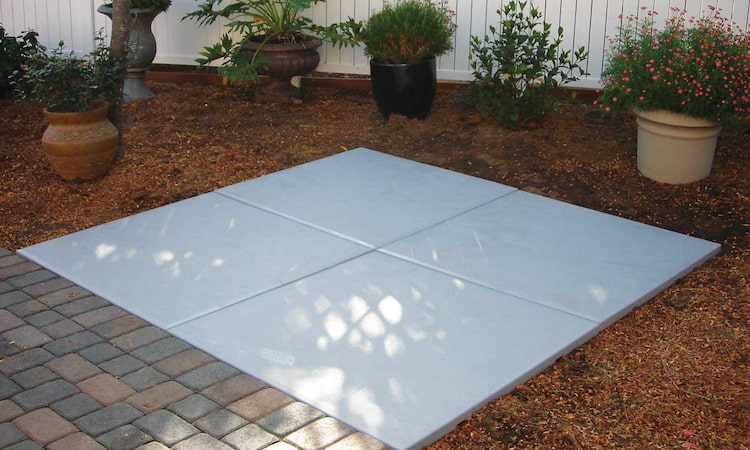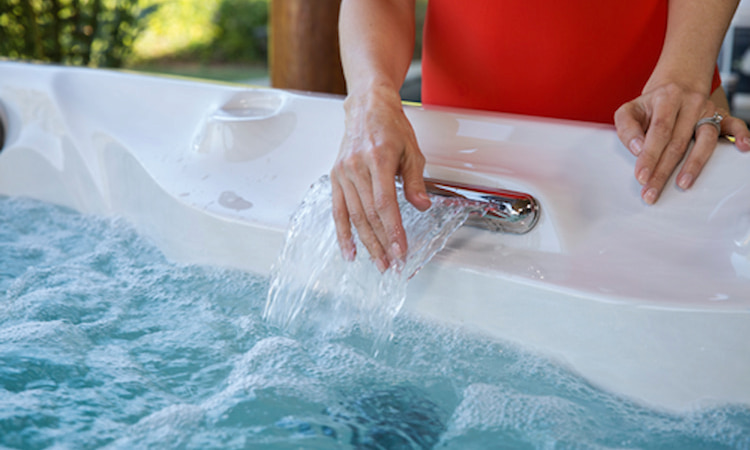You’re dreaming of a hot tub on your deck, but is it a good idea? Here, we’ll examine the practicality of an inflatable hot tub for your deck.
Yes, you can put an inflatable hot tub on your deck, but you need to ensure that the deck can handle the weight. An inflatable hot tub filled with water and people can weigh several thousands of pounds. Therefore, it’s crucial to know your deck’s weight capacity and the weight of the filled hot tub to prevent any safety hazards.
We’ll also cover maintenance tips and potential damage or safety concerns. Let’s get started on your journey to relaxation and luxury right on your own deck.

Quick Navigation
Evaluating Your Deck’s Structural Integrity
Before you set up your inflatable hot tub, you’ll regularly need to evaluate your deck’s structural integrity to ensure it can handle the weight. Remember, an inflatable hot tub filled with water and people will add significant stress to your deck. Therefore, it’s crucial to check if the deck can withstand this additional load.
Start by assessing the type of wood used for your deck. Some woods have a higher load-bearing capacity than others. You’ll also need to examine the condition of the wood. Rot, decay, or insect damage can significantly weaken the wood’s strength, reducing its ability to support additional weight.
Evaluate the construction of your deck next. A well-constructed deck will have strong support beams and joists spaced appropriately. Check the connections and fasteners for any signs of corrosion or weakness.
It’s equally important to consider the age of your deck. An older deck may not have been constructed to current code standards and might be less likely to support the weight.
Understanding the Weight of an Inflatable Hot Tub
In getting a grasp on whether your deck can support an inflatable hot tub, you’ll need to delve into the details of the hot tub’s weight. An empty inflatable hot tub isn’t heavy; it typically weighs between 50 and 100 pounds. But here’s the catch: when filled with water and occupants, the weight can skyrocket to a staggering 2,000 to 3,500 pounds.
Now, consider the weight of the water alone. Given that one gallon of water weighs about 8.34 pounds, a hot tub that holds 200 gallons already weighs nearly 1,700 pounds when filled. Add the weight of two average-sized adults, and you’re looking at a total weight of around 2,000 pounds.
Additionally, you’ll need to factor in the dynamic load – the weight that moves or changes, like the water when the jets are on or when people are getting in and out. This can add a significant amount of stress to your deck.
Understanding these weights will help you make an informed decision about whether your deck can handle an inflatable hot tub. It’s important to get this right – failure to do so could lead to a dangerous situation.
The Importance of Positioning Your Inflatable Hot Tub
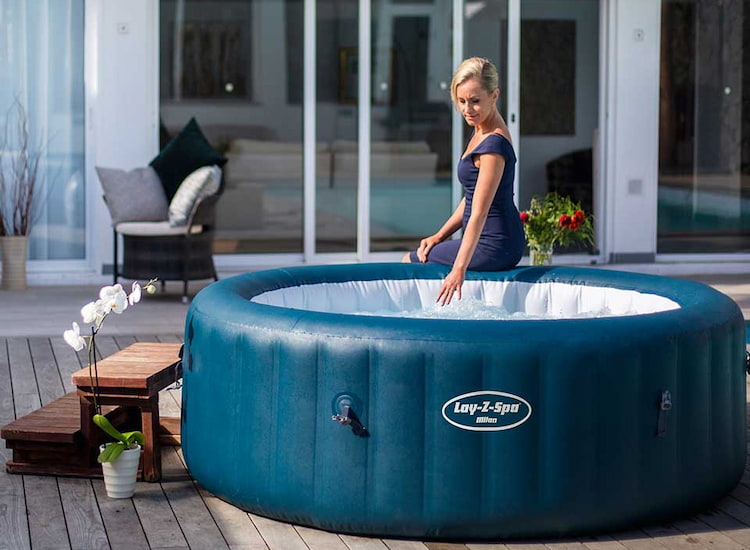
You’ll find that selecting the right spot for your inflatable hot tub on your deck is just as crucial as understanding its weight. Positioning it in the proper place not only ensures safety but also enhances the overall experience.
The first thing you should consider is access to your hot tub. It’s essential to place it where you can conveniently and safely enter and exit, especially considering the slipperiness that comes with water and wet surfaces. You wouldn’t want to risk an accident just because you didn’t think about this aspect.
Next, consider the view. Imagine relaxing in your hot tub with a beautiful vista in front of you. It’s not just about the relaxation that the warm water brings, but also the soothing ambiance that a great view can offer.
Lastly, remember privacy. You don’t want nosy neighbors or passersby intruding on your peaceful soak. Look for a spot that offers some degree of seclusion, or think about adding some form of screen or cover.
Related Read: How to Remove a Hot Tub From a Deck? A Step-by-step Guide
Maintenance Tips for Your Inflatable Hot Tub on the Deck
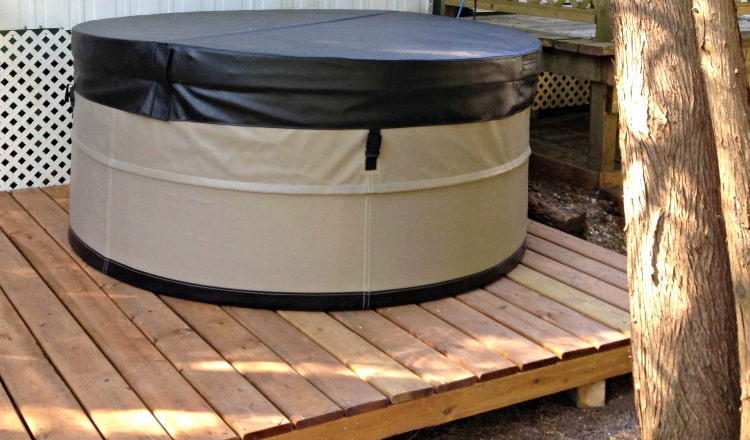
So, you’ve got your inflatable hot tub positioned perfectly on your deck, and now it’s time to talk about keeping it in top shape. Regular maintenance is key for longevity and to ensure a clean, safe environment for relaxation.
Firstly, keep an eye on the water quality. It’s advisable to test the pH and chlorine levels at least twice a week. Aim for a pH level between 7.2 and 7.8 and maintain a chlorine level of 1-3 ppm. This balance keeps the water clean and prevents damage to the tub materials.
Next, clean the filter weekly. It’s the frontline in keeping your hot tub water clear and free from impurities. Simply remove it, rinse it with a hose, and let it dry before putting it back.
Don’t forget to cover the tub when it’s not in use. This prevents debris from falling in and also saves energy by maintaining the water temperature.
Lastly, to protect your deck, place a sturdy mat under the tub. This helps distribute the weight evenly and prevents deck damage. Always follow the manufacturer’s guidelines for care and maintenance to ensure the best results.
Addressing Potential Damage and Safety Concerns
Despite the relaxation and fun an inflatable hot tub can bring, it’s crucial to consider the potential damage to your deck and the safety concerns that could arise from improper placement or usage.
One of the main concerns is the weight of the hot tub when filled with water and people. This could potentially strain the structure of your deck, leading to damage over time. Also, the constant moisture from the hot tub could cause wood rot or mold growth, especially in decks made of untreated wood.
To keep you and your family safe, it is also important to ensure that the deck area around the hot tub isn’t slippery when wet. You should also keep electrical cords and outlets away from water to avoid the risk of electrocution.
Here’s a table summarizing these potential issues and possible solutions:
| Potential Issues | Possible Solutions |
|---|---|
| Strain from weight | Reinforce deck structure |
| Wood rot or mold | Use treated wood, regular maintenance |
| Slippery deck | Use non-slip mats |
| Risk of electrocution | Keep electrics away from water |
Frequently Asked Questions
You’d want to use sturdy, water-resistant materials. Consider rubber mats or interlocking deck tiles. They’ll provide stability, protect your deck from scratches, and aid in water drainage. Always ensure they can handle the tub’s weight.
Yes, you can use an inflatable hot tub during winter. However, it’s crucial to ensure it’s properly insulated and heated. Also, remember to maintain the water temperature to avoid freezing and damaging the tub.
To efficiently heat your inflatable hot tub, ensure it’s well-insulated. Use a quality cover to retain heat. Consider a solar or electric heater. Regularly monitor and adjust the temperature to maintain consistent warmth.
You’re seeking the best brands for deck-friendly inflatable hot tubs. Intex, Coleman, and Bestway top the list. They’re durable, have great reviews, and offer a variety of sizes that can suit your deck’s capacity.
Filling up an inflatable hot tub on your deck typically takes between one to three hours, depending on your water pressure and the size of the tub. It’s a relatively quick and straightforward process.
Conclusion
So, can you put an inflatable hot tub on your deck? Absolutely, but you’ve got to be smart about it.
Ensure your deck’s structure can handle the weight, position it wisely, carry out regular maintenance, and address any potential damage or safety issues promptly. Remember, it’s all about balance and careful planning.

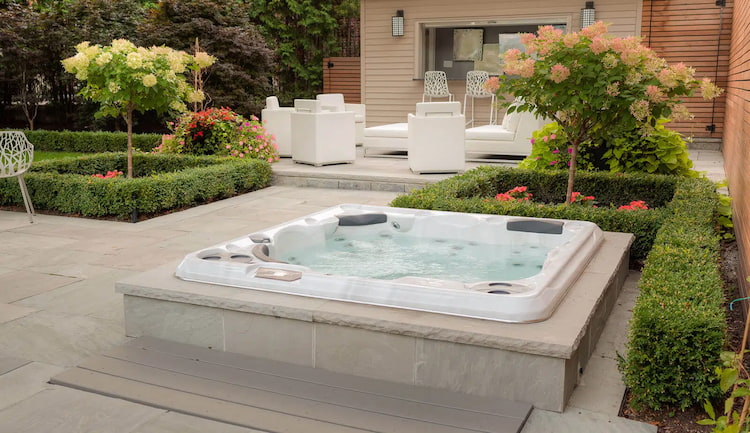

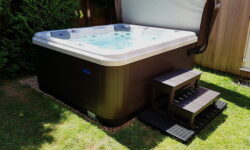
![Can You Put a Hot Tub on Pavers? [Pros & Cons] can you put your hot tub on pavers](https://hottubtales.com/wp-content/uploads/2023/10/can-you-put-your-hot-tub-on-pavers-250x150.jpg)
